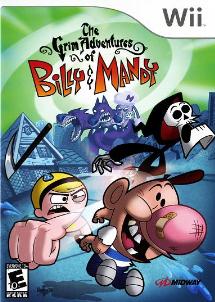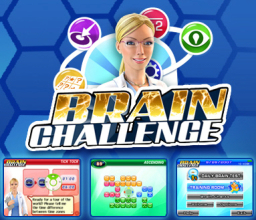
Balloon Fight is an action video game developed by Nintendo and HAL Laboratory and published by Nintendo for the Nintendo Entertainment System. It was originally released for arcades as VS. Balloon Fight, with the console version releasing in Japan in 1985 and internationally in 1986.

Excitebike is a motocross racing video game developed and published by Nintendo. In Japan, it was released for the Famicom in 1984 and then ported to arcades as VS. Excitebike for the Nintendo VS. System later that year. In North America, it was initially released for arcades in 1985 and then as a launch game for the Nintendo Entertainment System later that year, becoming one of the best-selling games on the console. It is the first game in the Excite series.
Umihara Kawase is a series of platform games starring the sushi chef Kawase Umihara, who has become lost in a world of surreal salt-water and fresh-water creatures. The series began with Umihara Kawase for the Super Famicom in 1994, which was followed by Umihara Kawase Shun in 1997, Sayonara Umihara Kawase in 2013, Umihara Kawase Fresh! in 2019, and Umihara Kawase Bazooka! in 2020.

Harvest Moon: Magical Melody is a social simulation video game for the GameCube developed by Marvelous Interactive. It is an updated version of Bokujō Monogatari: Shiawase no Uta, which was released on March 3, 2005 in Japan. The updated GameCube version was released in the United States by Natsume Inc. on March 28, 2006.

Excite Truck is a racing video game developed by Monster Games and published by Nintendo for the Wii. It features malleable environments and tilt-based controls. The game was one of the Wii launch titles in North America. It is the third main game in the Excite series and the first to feature vehicles other than motorbikes.

Sega Bass Fishing, known in Japan as Get Bass, is an arcade fishing video game developed in 1997 by Sega for the Sega Model 3 hardware. The game has since been ported to the Dreamcast, Microsoft Windows, Xbox 360, PlayStation 3 and Wii.

The Grim Adventures of Billy & Mandy is a fighting video game published by Midway based on the Cartoon Network animated television series of the same name. The game was developed by High Voltage Software and released in North America on September 25, 2006, for the GameCube and PlayStation 2, and on November 17, 2006, for the Wii as a launch title. A companion game for the Game Boy Advance, featuring sidescrolling beat 'em up gameplay, was developed by Full Fat and released on October 31, 2006. The Wii version was released in Australia on March 15, 2007, and in Europe on March 16, 2007. The game pits characters from the series against one another in 3D arena battles using various attacks, items, and environmental hazards to eliminate opponents and be the last one standing.

Wii Play is a party video game developed and published by Nintendo for the Wii console. It was released as a launch game for the console in Japan, Europe, and Australia in December 2006, and was released in North America in February 2007. The game features nine minigames, including a Duck Hunt-esque shooting range, a fishing game, and a billiards game, each of which are designed to showcase the features of the Wii Remote controller.
Naruto: Clash of Ninja, released in Japan as Naruto: Gekitō Ninja Taisen!, is a series of 3D cel-shaded fighting games based on the manga and anime series Naruto by Masashi Kishimoto. They are developed by Eighting and published by D3 Publisher and Tomy. The series began with four GameCube games, with the first two available internationally and the last two released exclusively in Japan, before splitting into two parallel Wii-exclusive follow-up series: the Gekitō Ninja Taisen EX tetralogy released exclusively in Japan and its international counterpart, the Clash of Ninja: Revolution trilogy. The two Wii series share the same gameplay mechanics, but differ with respect to content and characters, with the international Revolution series being based on a localized version of the Naruto anime series. The first half of the original series and the entire Revolution trilogy are available in North America and Europe, the first two Revolution games are available in Australasia and all games in the series except the Revolution trilogy are available in Japan.

Wild Guns is a 1994 space Western shooting gallery video game developed by Natsume for the Super Nintendo Entertainment System. Set in the Wild West with steampunk and sci-fi influences, the story follows Annie and her bounty hunter Clint, seeking revenge for the death of her family. The player controls either Annie or Clint sidestepping and jumping in the foreground while shooting down enemy robots in the background and dodging enemy bullets. These gameplay mechanics combine elements from third-person shooters and light gun games.

Sega Superstars Tennis is a sports video game developed by Sumo Digital and published by Sega. It is the second title in the Sega All-Stars series, preceded by Sega Superstars (2004), and crosses over characters, locations, and soundtracks from several Sega franchises, including Sonic the Hedgehog, Space Channel 5, and Super Monkey Ball.

Brain Challenge is a mental exercise video game, featuring "brain exercise puzzles". The game was developed by Gameloft Beijing for mobile phone and iPod and released on September 5, 2007. In 2008 was followed by a Nintendo DS version on January 8, an Xbox Live Arcade release on March 12, and a PlayStation 3 launch on November 27. The N-Gage 2.0 version was released on the day of the service's launch, April 3, 2008. A version for WiiWare was released in autumn 2008 on all three regions. The Wii version also uses Miis for the players profile. OnLive also had launched their new streaming game platform with Brain Challenge on July 27, 2010. The game was released for Mac OS X in January 2011.

WWE SmackDown vs. Raw 2009 is a professional wrestling video game developed by Yuke's and published by THQ for the PlayStation 3, PlayStation 2, PlayStation Portable, Wii, and Xbox 360 video game consoles, with TOSE overseeing development for the Nintendo DS version. The game was first released on November 9, 2008, in North America. It is the tenth overall installment in the video game series based on the World Wrestling Entertainment (WWE) promotion, and the fifth game under the SmackDown vs. Raw name, named after the promotion's Raw and SmackDown brands. It is the sequel to 2007's SmackDown vs. Raw 2008 and the second game to feature the promotion's ECW brand.

Michael Jackson: The Experience is a music video game based on Michael Jackson's songs. It was developed and published by Ubisoft, and was released on 23 November 2010 in North America, 25 November 2010 in Australia and 26 November 2010 in Europe for the Nintendo DS, PlayStation Portable, and Wii. It was also released on 12 April 2011 in North America, 14 April 2011 in Australia and 15 April 2011 in Europe for PlayStation 3's PlayStation Move and Xbox 360's Kinect. The Japanese release on 8 December 2011 only revised the PlayStation 3, Xbox 360, and Wii consoles. The game features many of Michael Jackson's hits, such as "Bad", "Thriller", "Beat It", "Billie Jean", "Smooth Criminal", "Black or White", "The Way You Make Me Feel", etc. However, some songs like "Man in the Mirror" and "P.Y.T. " are excluded. Initial launches of the game included a limited edition replica of Jackson's sequined glove. It was later released for the Nintendo 3DS on 7 November 2011 in North America and 11 November 2011 in Europe, for iPhone and iPad on 7 December 2011 in North America and for PlayStation Vita on 15 February 2012 in North America, 22 February 2012 in Europe and 23 February 2012 in Australia. It was announced that the game would be released on Mac OS X, and iPad 2. The game sold 2 million units in two months, not including Japanese sales, making it one of the best-selling Wii title games.

Rhythm Heaven Fever, known in PAL regions as Beat the Beat: Rhythm Paradise, Minna no Rhythm Tengoku in Japan and Rhythm World Wii in Korea, is a music video game developed by Nintendo and TNX for Nintendo's Wii. It is the third game in the Rhythm Heaven series, following Rhythm Tengoku for the Game Boy Advance and Rhythm Heaven for the Nintendo DS, and was succeeded by Rhythm Heaven Megamix for the Nintendo 3DS in 2016. The game was released in Japan on July 21, 2011, in North America on February 13, 2012, in Europe on July 6, 2012, and in Australia on September 13, 2012. It was digitally re-released for the Wii U in Japan on July 27, 2016, in North America on November 10, 2016, and in Europe on November 22, 2016.

3D Pixel Racing is an arcade-style racing game developed by Vidia and released in 2011. The game was released as a downloadable game on WiiWare and in the App Store for iOS devices. 3D Pixel Racing heavily capitalizes on its graphical uniqueness. Unlike most 3D games, every object in 3D Pixel Racing is made of multi-colored voxels that are reminiscent of old 8-bit games from the 1970s and 80's.

Brave Tank Hero is a tank action video game for the Nintendo 3DS and Wii U developed by Arc System Works and published by Arc System Works in Japan, and Natsume Inc. worldwide. The game was first released for the Nintendo 3DS on April 2, 2014 in Japan, and on August 11, 2015 worldwide. A Wii U release followed on July 30, 2014 in Japan, and on August 27, 2015 in North America, and then PAL regions on September 24, 2015. The story of Brave Tank Hero revolves around a place called Paradise City that has been invaded by the Shadow Tank forces and it's up to the player, a low-ranking soldier, to take it back from them. Missions start up slowly as they introduce the player to the gameplay and gimmicks; there are a total of 50, and they make up the bulk of the gameplay. Players can also upgrade their tank and unlock other tanks. Reviews were largely negative, citing bland, meaningless, and frustrating gameplay. However, reviewers did express that there was some entertainment value in the games local multiplayer.

Klonoa is a side-scrolling platform video game for the Wii developed by Paon and published by Namco Bandai Games. It is a remake of the 1997 PlayStation game Klonoa: Door to Phantomile, the first game in the Klonoa series, updating the game with fully 3D graphics, additional content, and gameplay changes. It was released in Japan in December 2008 and in North America and Europe in May 2009.

Virtual Fishing is a 1995 fishing video game developed by Locomotive Corporation and published by Pack-In-Video in Japan for the Virtual Boy. The player participates in a series of fishing tournaments at various different locations by catching a large number of fishes with a high average weight under a time limit. Its gameplay consists of two segments and features two additional modes of play.
Natsume Inc. is an American video game publisher. Originally established as an American division of Natsume Co., Ltd. in 1988, it split from its parent company in 1995 to become an independent publisher.

















